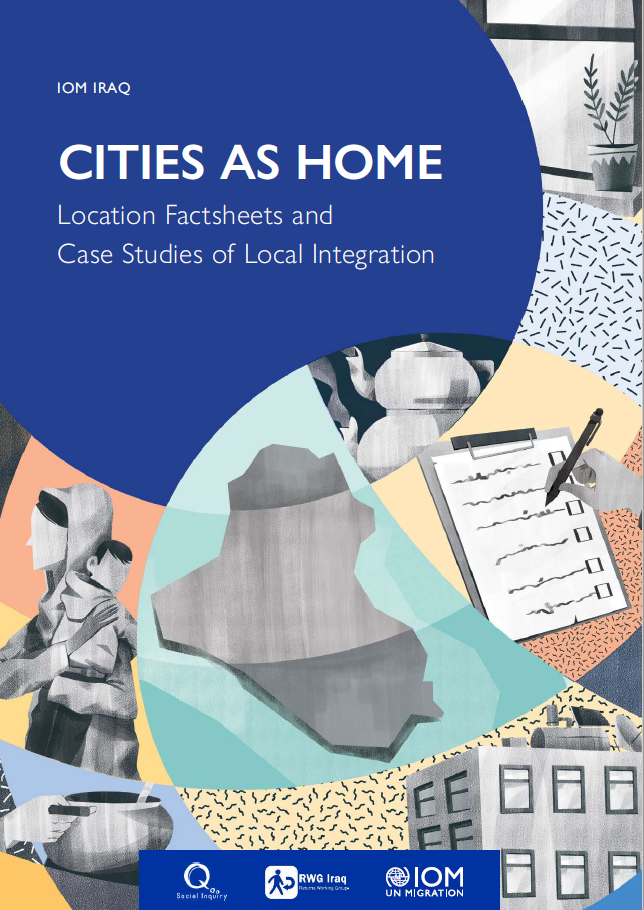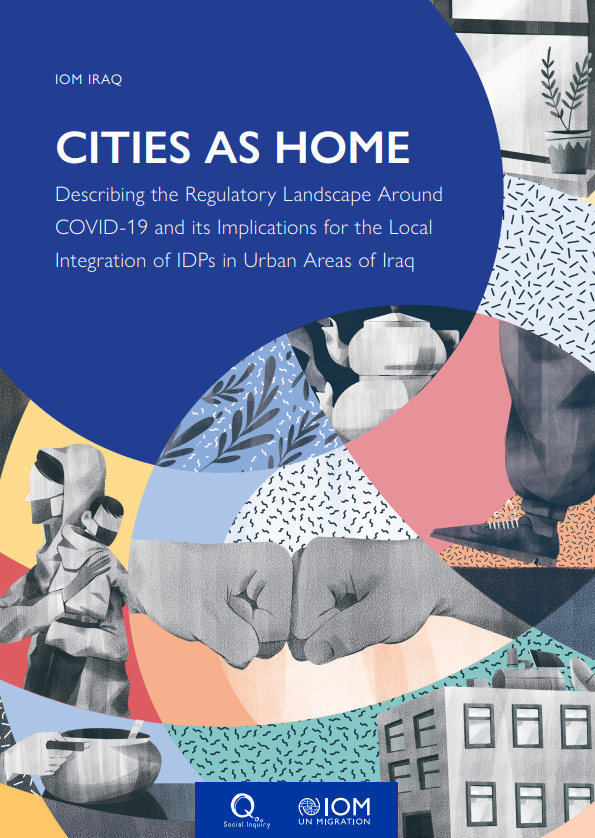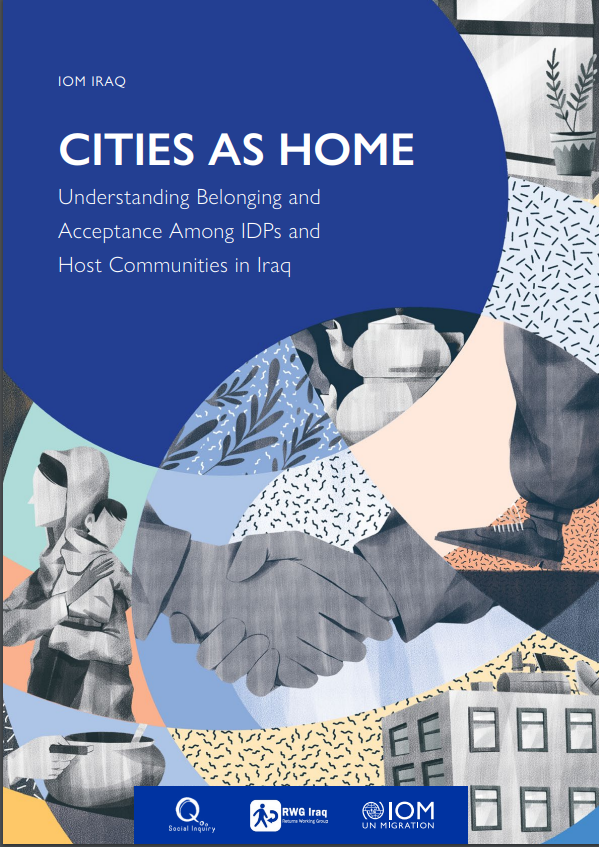CITIES AS HOME: Location Factsheets and Case Studies of Local Integration
Additional outputs of this project include a general report on determinants of integration for IDPs and host community members and a brief report on COVID-19 regulations vis-à-vis integration.
CITIES AS HOME: Describing the Regulatory Landscape Around COVID-19 and its Implications for the Local Integration of IDPs in Urban Areas of Iraq
Following from the IASC Framework on Durable Solutions for
Internally Displaced Persons, this analysis focuses specifically on localised
regulations in response to COVID-19 as they relate to movement, healthcare,
employment, housing, and education.
CITIES AS HOME: Understanding Belonging and Acceptance Among IDPs and Host Communities in Iraq
In order to contribute to the measurement of local
integration of internally displaced persons (IDPs) in Iraq, IOM Iraq, the
Returns Working Group, and Social Inquiry implemented an in-depth study of 14
urban locations in the country hosting a high density of families displaced due
to the ISIL conflict.
Utilising data collected on IDPs' perceptions and living
conditions in displacement (1,382 respondents) and on those of host community
residents (1,437 respondents) in the same neighbourhoods as well as key
informant interviews with local authorities and policy-implementers (40
interviews) in these areas, this work seeks to identify which factors help or
hinder local integration – and those locations that are more (or less)
conducive to this outcome.
This study is predicated on the understanding that local
integration is not only based how on IDPs perceive their own belonging in the
hosting location, irrespective of any stated intentions to stay or return, but
also how host communities feel about accepting them. Further to this, these feelings may
themselves be influenced by the character of the urban areas where IDPs and
host communities reside as well as the regulatory environment surrounding them.
Reasons to Remain (Part 2): Determinants of IDP Integration into Host Communities in Iraq
Nearly five years since the start of the ISIL-conflict and over a year since its official end, 1.8 million Iraqis remain internally displaced, with almost half of them in displacement for more than three years.
As the rate of return slowed in 2018, attention must also be paid to the ways in which IDPs are resolving their displacement in relation to the communities they live in now. Therefore, it is necessary to also understand the dynamics of IDPs in their place of displacement, potentially on a path to another durable solution: local integration.
Thus, in order to better understand what local integration may look like in Iraq, IOM Iraq, the Returns Working Group (RWG), and Social Inquiry implemented a targeted, in-depth study of Sulaymaniyah and Baghdad Governorates.
The purpose of this study is to identify which factors help or hinder local integration, utilizing data on perceptions and living conditions of IDPs displaced for more than three years and data collected from host community residents. The purpose here being to guide strategies and interventions to support both those displaced and those who host them move towards a new dynamic where all are equally woven into the local fabric at large.
The findings highlight that socioeconomic, cultural, and spatial factors at the individual and structural levels matter for integration and acceptance. Most of the evidence collected here points to the fact that better integration and acceptance is found among more socioeconomically equal communities, those with strong but more elastic social cohesion, and in places where host communities feel historical grievances related to violence and conflict have been dealt with satisfactorily.
While it is difficult to find a single location that has all three of these characteristics, most locations in this study, and in Iraq in general, have at least some combination of these. Interventions therefore should be targeted toward reducing inequalities, building more inclusive social cohesion, and redressing past wrongs.



